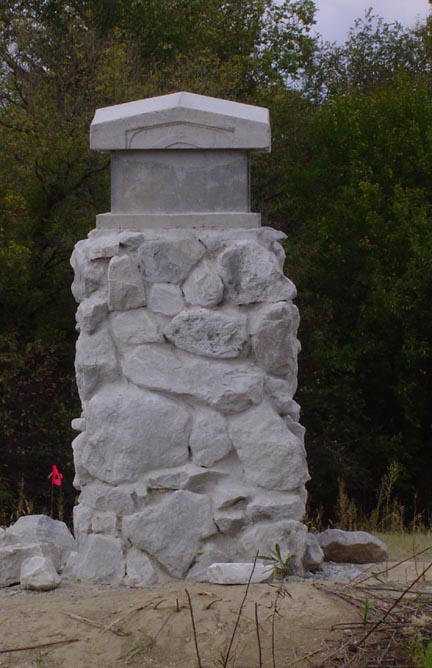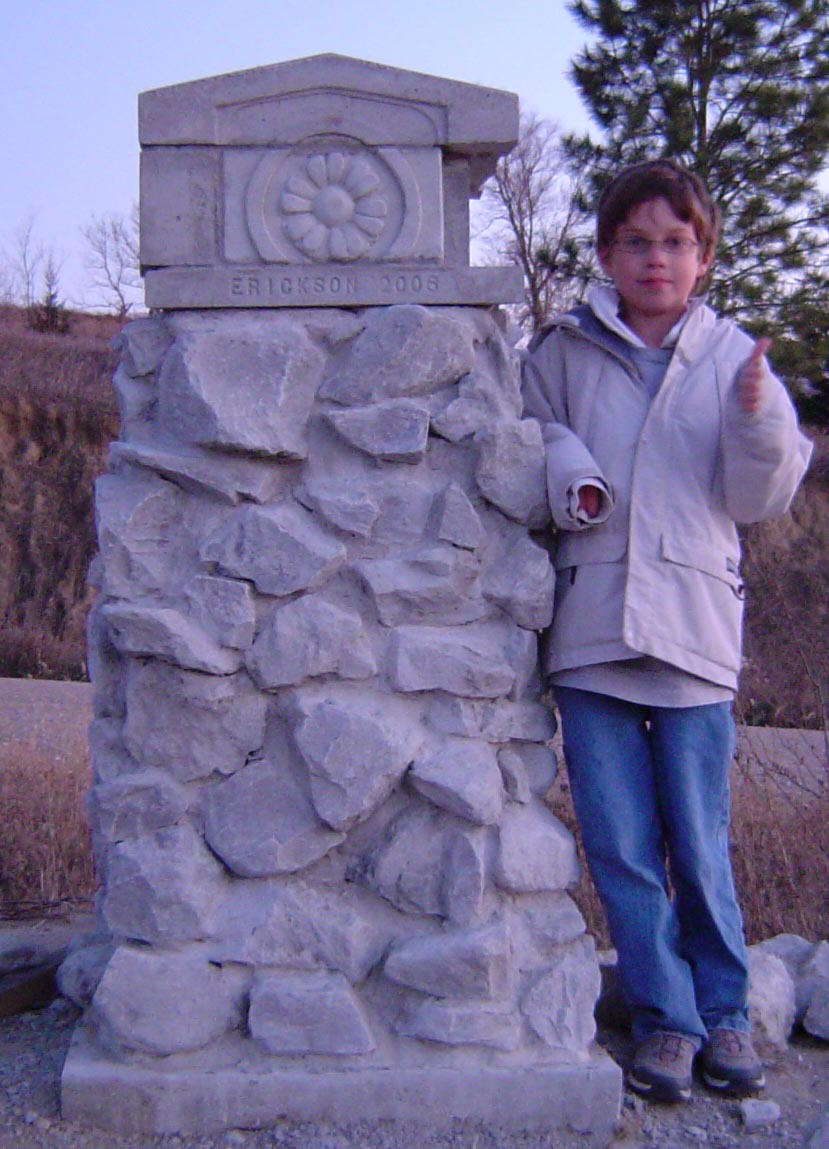An East-West Line
'
At first, I thought, I would observe the sunset on the equinox. I don't really have a clear view to the east, so it would have to be sunset. I reasoned that during the equinox, the sun has to set exactly in the west. Well, remember, the equinox is when the night hours and day hours are exactly equal. Twelve hours each. It is the day when the sun's path crosses into winter or into summer. Although the earth still tilts at 23.5°, the axis of the earth is perpendicular to a line from the earth to the sun on those two days each year. Roughly March 22nd, and September 22.
Just as you may recall from childhood while riding in the car and looking at the sky,remember wondering why the moon, stars or sun follow us along while closer objects race by? The sun is so far away that it follows you along even when walking just a few feet. So, it was important to note where the sun set on the opposite valley --AND where I was standing at the time.
|
An East-West Line'
|
Enter: The "Sun Transit"On the way home that day it dawned on me. First, you have to have an accurate clock. Secondly, you have to know where, within your time zone, you are making the observation. In my case it was 6° West of a multiple of 15°, therefore, I thought, the sun will shine from the south at exactly 24 minutes past the hour. The earth sweeps by in its revolving across time zones like the hour hand on a clock. It is not quantized into hours, minutes or seconds. For me to use this method, I must note the exact time and also, I found out, the variance due to the elliptical nature of the earths path around the sun. The sun transit.As it turns out, the sun shines from due south at a specific time each day called "Sun Transit". This time is about when you might expect it, but can vary by several minutes from your "noon". In my case, due to my position in the time zone and daylight savings time, my "noon" happened at 1:24pm. According to the transit ( which can be found at this website: ) The sun shone from due south at 1:17 on that day. Here's a website that, at the time of this writing, can calculate the solar transit for any location and any date: http://aa.usno.navy.mil/data/docs/mrst.php |
Well, that makes me a little less off. Instead of 12 minute off, I was 5 minutes off. 5/60 of hour is an error of about 1/12 of 15° or, 1.25° Hooray! Well, how close is that? Still 18 feet at the end of a 830 foot line! I decided to go out, line up the sun at exactly sun transit for that day, use the transit-level and plot a north south line, then turn it 90° and get my east-west. At exatly 1:12, I noted the position of the sun and lined up the telescope of the transit-level using the projection of the sun onto the palm of my hand. You can even see the crosshairs!
Okay, now I was pretty close, but it occurred to me while I was taking the reading. 1:12 pm. Hmm. Do they mean the beginning of 1:12 pm or the end of 1:12 pm? It turns out, the sun's apparent path in the sky is about 1/4 of a degree during that minute. This represents an error of about 3.6 feet in a line 830 feet long. I knew I could get closer.
By looking up the time of sun transit for several days, I found that it happens in each minute for three or four days. On the day I was observing, it had JUST changed from 1:13pm to 1:12 pm. Therefore, I should have waited until the very end of 1:12 to adjust my transit-level. I was about one minute off.
How can I get my clock accurate enough to make these readings? Aha! The GPS device just happens to use very accurate timing to determine its position. I checked its display with the Grenwich Mean Time website and my computers clock was within 2 seconds... the GPS unit was dead on.
The next day I set out to make my final measurement. I moved my flag about 2 feet and 6 inches up the hill from a reference point 435 feet away. The northmost point, I moved about 4 feet. That's it. I am done now.
How close to my original line using the setting sun on equinox? 1.25 degrees. Why the difference? The hill across the valley obscures my view of the distant horizon. In the few minutes the sun is still technically ahead of sunset, it has already sunken below my view. How many minutes? I would say, about five.
CLoSE ENouGH!!!
How High the Sun!
One thing about passive solar, you also need to know how high the sun is, on the average, all day long during the coldest part of the year and also the warmest parts.Today, December 15th, is is a rousing 2 degrees outdoors, but the sun is shining brightly. Solar transit occurs at 12:20 (for this location) and at that time, I am measuring the angle of the sunshine off the horizon. I really love this old transit level, a Keuffel & Esser, just like my dad used to use.
At the exact time, 12:20:45pm , I measure the height of the sun off the horizon to be 25 degrees, 15 minutes. Okay? For that matter, I also note that my instrument is pointed at 4 degrees 30 minutes. Time to see if my house is actually situated ( oriented ) due north/south.
This is where most people will difinitely say I have WAY too much time on my hands. Anyway, the house does point north south, to within my degree of error in measurement. Quite close, in fact. Of course, in the city, everything lines up with the street grid.
One would figure, the height of the sun, here at 41 deg. 16 min. 00.01 seconds to be, at the height of the day, 90 degrees, minus 41:16:00.01, minus 23.5 degrees on the winter solstice.
And what would that be... 90 - 41.2668 - 23.5 = 25.233 degrees.
Well, I am off by at least 2/100 of a degree.